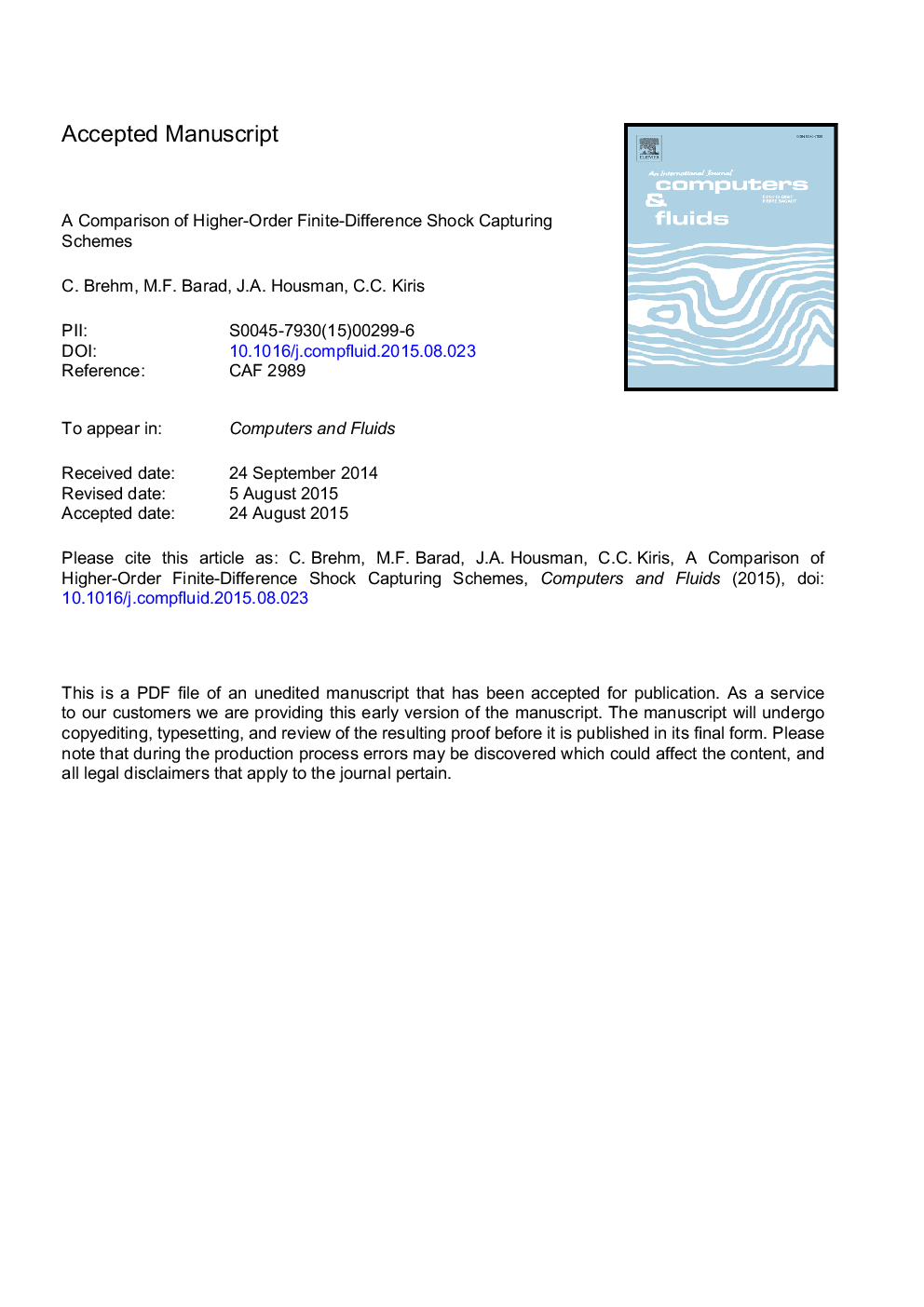| Article ID | Journal | Published Year | Pages | File Type |
|---|---|---|---|---|
| 7156827 | Computers & Fluids | 2015 | 43 Pages |
Abstract
The efficiency of computational fluid dynamics simulations can be greatly enhanced by employing higher-order accurate numerical schemes which provide superior accuracy for a given cost. For unsteady turbulent flow simulations involving shocks, contacts, and/or material discontinuities, various higher-order shock capturing schemes are available in the literature. The desired numerical scheme should be free of spurious numerical oscillations across discontinuities and it should obtain higher-order accuracy in smooth flow regions in an efficient manner. Sufficient robustness is necessary for effectively utilizing these numerical methods in engineering and science applications. Three classes of higher-order shock capturing schemes are compared in this paper: (1) central finite-difference schemes with explicit artificial dissipation, (2) a compact centered finite-difference scheme with localized artificial diffusivity and (3) weighted essentially non-oscillatory schemes in both explicit and compact finite difference forms. Multiple variations of these methods were implemented and tested using a block-structured Cartesian mesh solver. The current paper assesses shock capturing capabilities as well as effects on the accuracy in smooth flow regions using a variety of test cases that range from canonical shock problems to homogeneous isotropic turbulence at a turbulent Mach number of 0.5 where shocklets are formed. Finally, a computational cost breakdown for each scheme is provided and the overall computational efficiency of the different schemes are compared to each other.
Related Topics
Physical Sciences and Engineering
Engineering
Computational Mechanics
Authors
Christoph Brehm, Michael F. Barad, Jeffrey A. Housman, Cetin C. Kiris,
